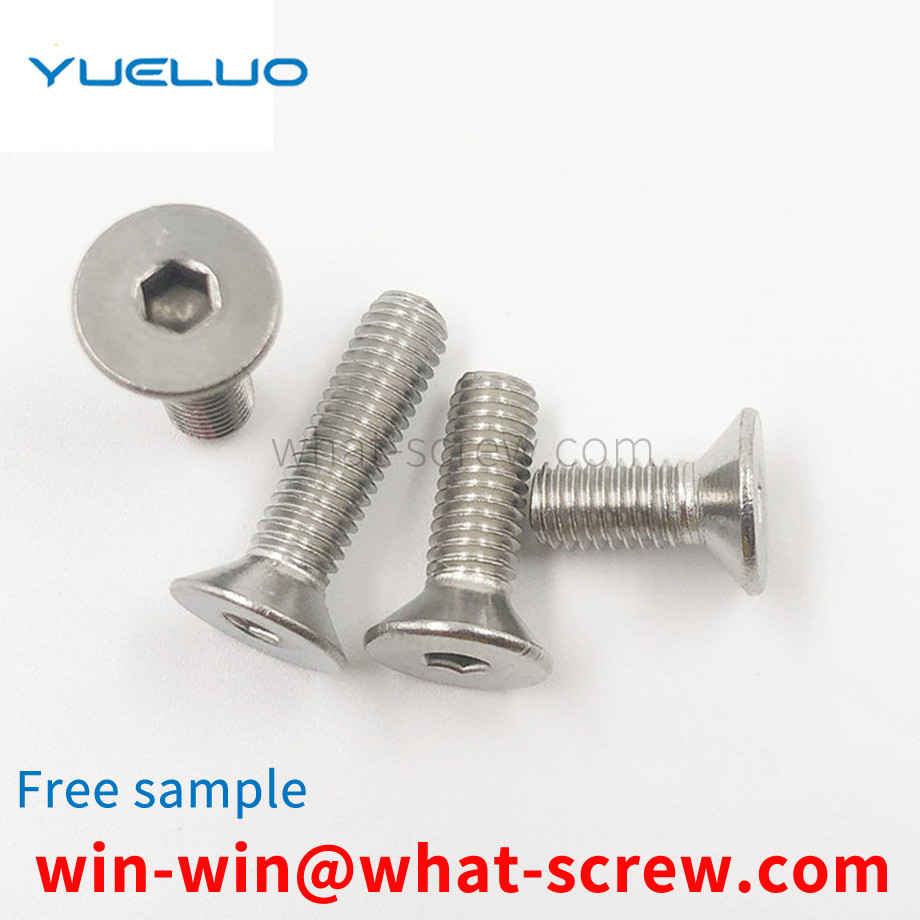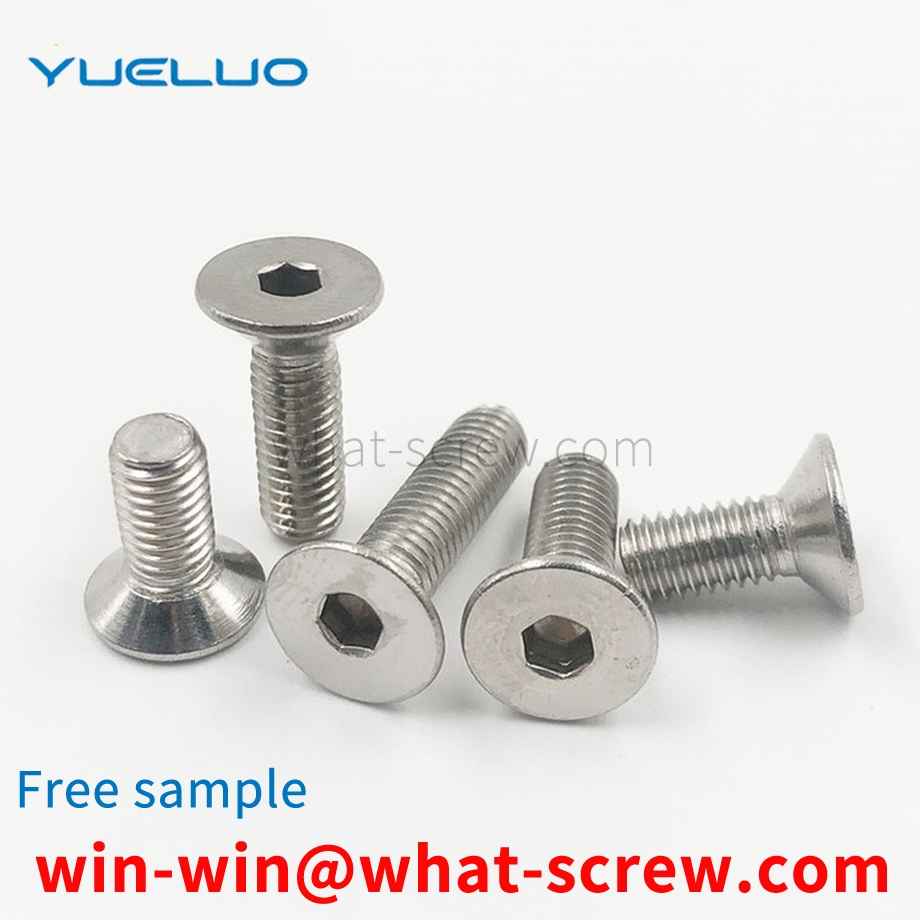screw locking device includes a mounting frame, a driving structure arranged on the mounting frame, a screwdriver and a measuring structure driven and moved by the driving structure; the measuring structure includes a solenoid valve cylinder, which is fixedly connected with a piston rod of the solenoid valve cylinder. The ejector rod, the pressure sensor for detecting the thrust of the solenoid valve cylinder, and the control panel electrically connected with the driving structure, the solenoid valve and the pressure sensor.
The traditional gasket is a single-piece gasket that works independently. This gasket mainly relies on friction to achieve the anti-loosening effect. The new washer is composed of two pieces. Its unique embedded structure changes the way that the traditional washer mainly achieves anti-loosening through friction. Instead, it adopts the most advanced anti-loosening technology in the world and uses the tension between the two gaskets to achieve. The dual effect of anti-loosening and tightening.
nut is a nut, a part that is screwed together with a bolt or screw for fastening. A component that must be used in all production and manufacturing machinery is divided into carbon steel, stainless steel, non-ferrous metals (such as copper), etc. several types. Chinese name nut Foreign name Crewnut alias Nut properties and bolts or screws screw together to tighten the role of carbon steel, stainless steel, non-ferrous metal standard GB German standard international standard Japanese standard American standard features Steel, stainless steel, copper, alloy, etc.
DenverSelf-tapping screws were introduced into the industry in large numbers in 1914. The earliest design (essentially imitating a Denverwood screw) was a thread-forming screw made of hardened steel with an A-ended end, mainly used to connect sheet metal channels for heating and ventilation systems. Therefore, it is also called: sheet Denvermetal screw. By the end of the 1920s, with the widening of the market and new applications, emphasizing new designs, its application performance was widely improved. The following introduces the four different stages of the development of self-tapping screws in 40 years: thread forming self-tapping screws, thread cutting self-tapping screws, thread rolling self-tapping screws and self-drilling self-tapping screws. 1. Ordinary self-tapping screws (thread forming self-tapping screws) Ordinary self-tapping screws are a direct product of early sheet Denvermetal screws. The principle is: when screwing it into a prefabricated hole, the internal thread connected to the screw is formed by the displacement of the material around the hole and the material is pushed into the space between the threads. 2. Self-cutting self-tapping screws (thread cutting self-tapping screws) Because ordinary self-tapping screws are formed only in very thin threads. And it can be easily realized on materials with good toughness. Develop and expand the use of self-tapping screws to thicker sections and harder, brittle and other materials with poor deformability. In this way, the self-cutting self-tapping screw is developed: a cutting groove or cutting edge is machined at the end of the screw shank. When this kind of screw is screwed into the prefabricated hole, the screw acts as a tap and actually cuts out the thread that connects with itself. 3. Self-Extrusion Self-Tapping Screws (Thread Rolled Self-Tapping Screws) In the early 1950s, fastener engineers began to recognize the potential advantages of self-tapping screws as structural rather than just lightly loaded attachments. This has led to the development of a new self-tapping screw thread rolling self-tapping screw (self-extrusion self-tapping screw). According to the design principle of cold forging taps, the thread and end are specially designed for this kind of screw, so that the screw can be formed by applying intermittent and periodic pressure on the crest of its thread instead of on the side of the entire thread. Internal thread for connection. By concentrating and limiting the forming pressure, the pressurized material next to the hole is made to flow more easily and to better fill (squeeze) into the flanks and roots of the thread of the self-tapping screw. Since the frictional resistance of screwing in is much lower than that of ordinary self-tapping screws, threaded rolling self-tapping screws (self-extrusion self-tapping screws) can be screwed into thicker sections. At the same time, it has better screw control and tightening torque, and greatly improves the connection strength and overall firmness. The engineering standard of this kind of self-tapping screw stipulates that the selection of materials, the mechanical properties of heat treatment and the working performance should be strictly controlled. 4. Self-drilling and self-tapping screws (self-drilling screws) People have done statistics: Among the ten expenses that constitute the total assembly cost, the highest one includes the processing of holes. In practical applications of self-tapping screws, prefabricated holes need to be processed. Moreover, in order to make the prefabricated holes have good effect in practical application, the size of these holes must be controlled within a fairly strict range. In the early 1960s, self-drilling and self-tapping screws appeared. A major step forward in reducing assembly costs by eliminating the need to machine prefabricated holes. In general, self-drilling and self-tapping screws realize drilling, tapping and tightening in one operation. These are the four main stages of self-tapping screw design and development. In addition, two newly developed products are also worthy of introduction. Both are screws with a special thread type. One is designed for plastic and other low-strength materials; the other is used in the construction industry to connect cement wall panels, so it is also called wall panel self-tapping screws.
Bolt and nut fasteners are widely used fasteners, which can be used in mechanical products as well as daily craft industrial products, such as plastic packaging boxes, plastic packaging boxes, paper packaging boxes, paper packaging boxes, etc. . When bolt and nut fasteners are used in daily craft industrial products, the requirements for the degree of tightening are generally low, but they are required to be easy to install and use. When assembling the existing bolt and nut fasteners, it is generally necessary to manually twist the bolt or the nut several times until the two are tightened, which takes time and causes inconvenience in daily life. Lower, it is manifested as an increase in labor costs. SUMMARY OF THE INVENTION The main purpose of Guangdong Yueluo Hardware Industry Co., Ltd. is to provide a bolt and nut fastener that is easy to install in view of the above-mentioned deficiencies of the prior art. The two are assembled and fastened, which is convenient to use.
We have many years of experience in the production and sales of screws, nuts, flat washers, etc. The main products are: hardened pins, pin A type flat key pins, cable joint nuts, blue zinc-plated stamping self-locking nuts and other products, we can provide you with Provide the right fastener solution for you.



















 Service Hotline
Service Hotline




